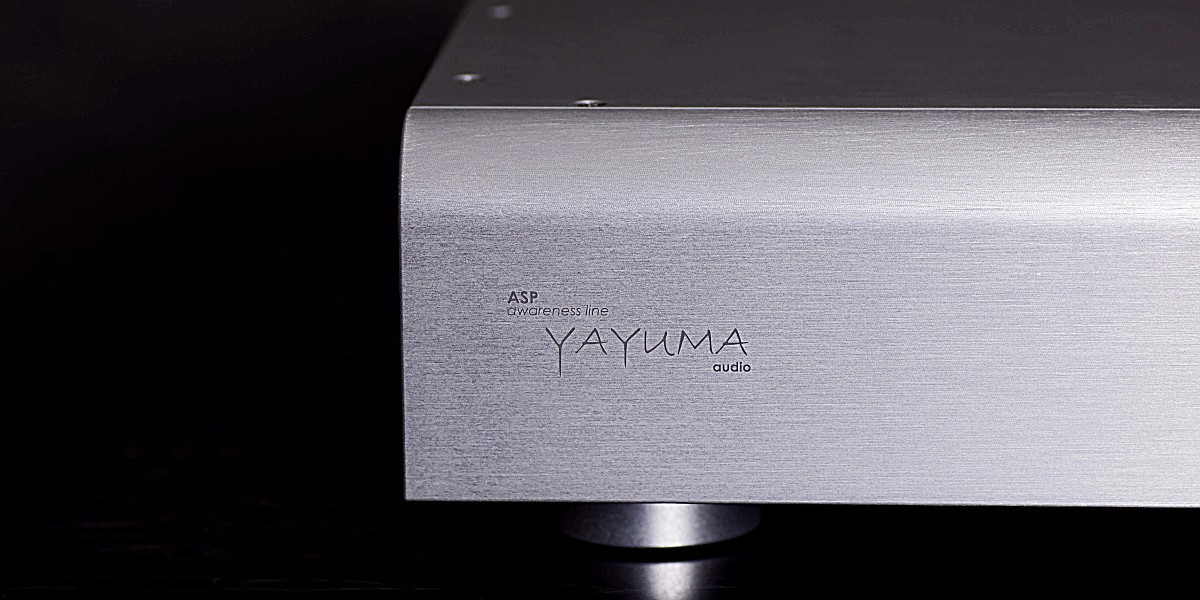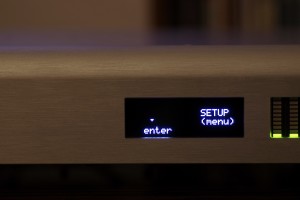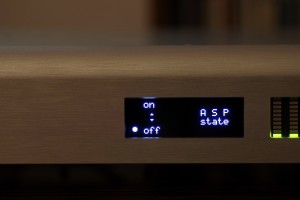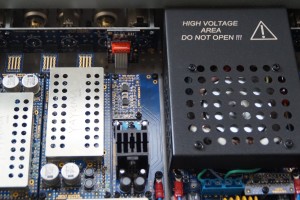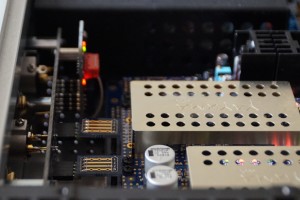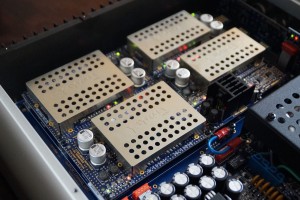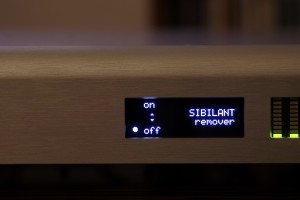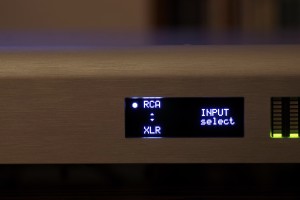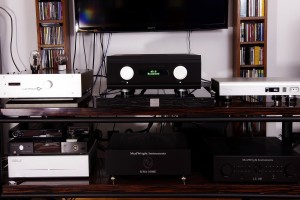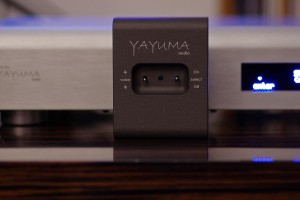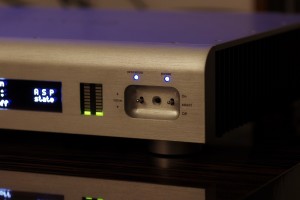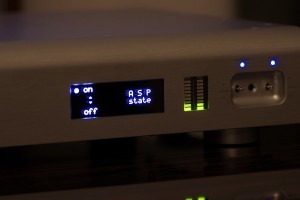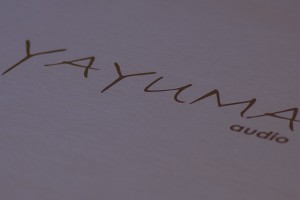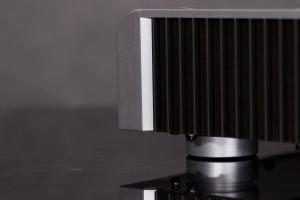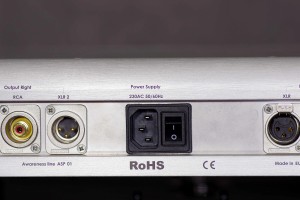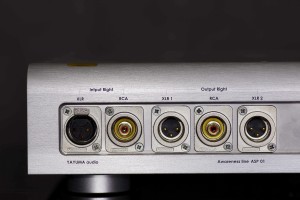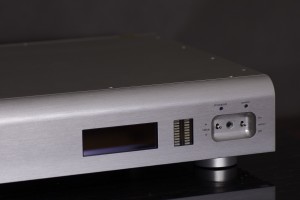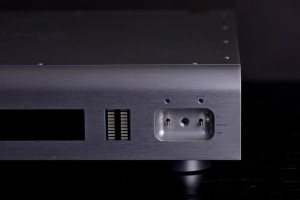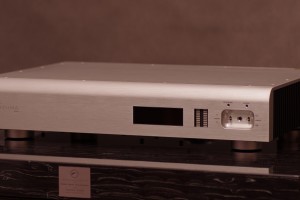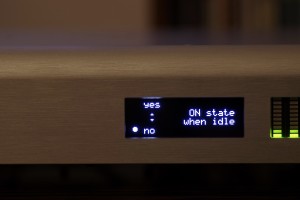Manufacturers often use a beautiful, flowery language to describe their audio products, sometimes creating an impression as if these work according to laws of magic rather than those of physics. The point is that the latter are not optional and one can not choose whether they apply or not. On the other hand, it is possible to optimize sound reproduction while working within limits of laws of physics. This is exactly what Yayuma Audio’s sound processor, their very first product from the Awareness line named ASP 01, does. Its operation is based on mathematical models that optimize sound reproduction so that what one can hear from the loudspeakers is as close as possible to what microphone(s) “heard” while the sound was recorded. The ASP 01, on one hand, is to allow user to achieve what we call “high fidelity” and the other, according to its creators this innovative solution delivers better results than any other device existing on the market.
Introduction
I encountered the Yayuma brand-name for the first time during the last year’s Audio Video Show in Warsaw. Every year before this event I study a list of exhibitors looking for presentations that are particularly interesting (for me). Preparing for this event with each and every year is becoming increasingly important, or even essential. The number of exhibitors and visitors makes it just too big for one person. So I have to make some choices, choose the rooms that I have to visit and those I can go to if there is enough time. When reviewing the list of exhibitors, I always pay particular attention to Polish companies and products, because from the very beginning of my reviewer’s career I’ve considered it my duty to promote domestic quality products. And there is no shortage of those – the industry is developing in our country really nicely, and more and more Polish products are highly appreciated around the world. We never lacked great designers with good ideas but succeeding on an international market takes more than just a good idea. People are looking for an interesting design, proper performance, make&finish of the highest class, plus reliability and proper after-sales service. I am really happy seeing that every year there are more and more Polish brands that offer products covering all those aspects which allows them to compete even on very demanding markets. In our industry it rarely happens, however, that something completely new, innovative is introduced to the market. Of course this applies to the whole audio industry, not just to Polish manufacturers. The latter though, have an increasingly difficult task, because they usually do not have sufficient funds for R&D departments, they can’t spend hundreds of thousands of dollars per the years on developing new technologies, materials or solutions. If one of our companies actually succeeded in developing a groundbreaking solution, it would be a really big achievement.
I noticed Yayuma when I first looked at the Audio Video Show 2016 guide, firstly because of this peculiar name, and secondly, the entry in the guide suggested that this small Polish company had actually come up with something new, something that could actually improve the quality of the sound playback. Well, it’s not really about improving sound quality, but rather about restoring it – I’ll delve into it later. The brand-name, as I learned later, comes from the names of the three people who make up the company. The three gentlemen are: Jarek Proksa (Ya), Jurek Pona (Yu) and Marcin Skrzypczak (Ma). The solution they developed is called PONA Sound, which stands for Pure Original Natural Audio on one hand, and the name of this algorithm’s creator on the other.
So I had the name and room number in Sobieski on my “to visit” list and the day I visited this hotel, I grabbed the door handle of Yayuma’s room, which turned out to be closed. Having a tight schedule, I went further and planned to try it later. Actually, when I walked past the room for the second time, I was stopped by one of the Yayuma crew members and invited inside. As it turned out, this room was used for closed presentations for people from audio industry, and in the next one there was an open show for the public, although it was so crowded most of the time it was hard to get in. So I went in to witness a short presentation of the product and to listen for a few minutes to some music while trying to figure out what ASP 01 was really about.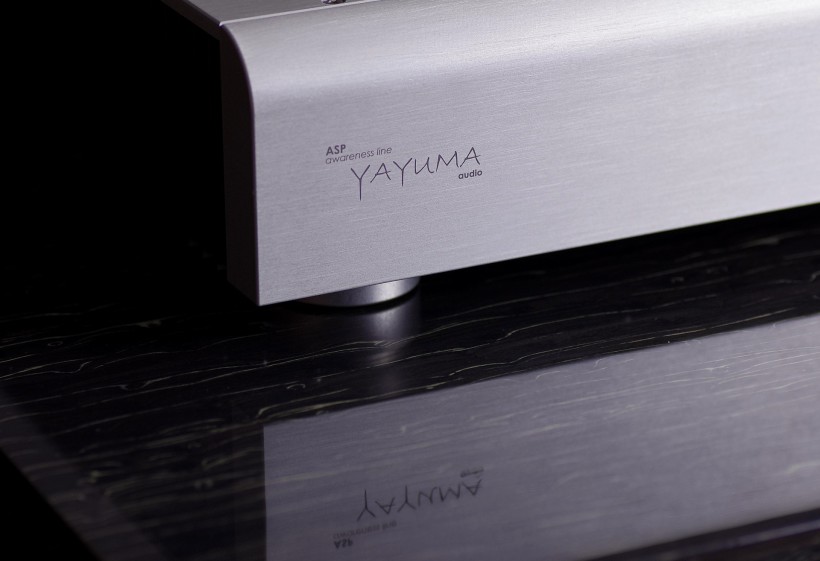
To be honest, even though I strongly support Polish companies, and additionally what I’d read in the guide about ASP 01 “on paper” sounded reasonably, my intrinsic skeptic was still, well, skeptical towards this really costly device. First of all, Yayuma does not (re)play music itself – meaning it’s not a source, amplifier or speaker, and secondly I’m not a fan of interfering with the musical signal, and that’s what sound processors do. I rather belong to the fans of keeping things as simple as possible because, in my experience, that’s what often brings the best sonic results, meaning the most natural sound. That’s also what I am always looking for in any audio component or system – sound that is natural, meaning resembling that of instruments playing live.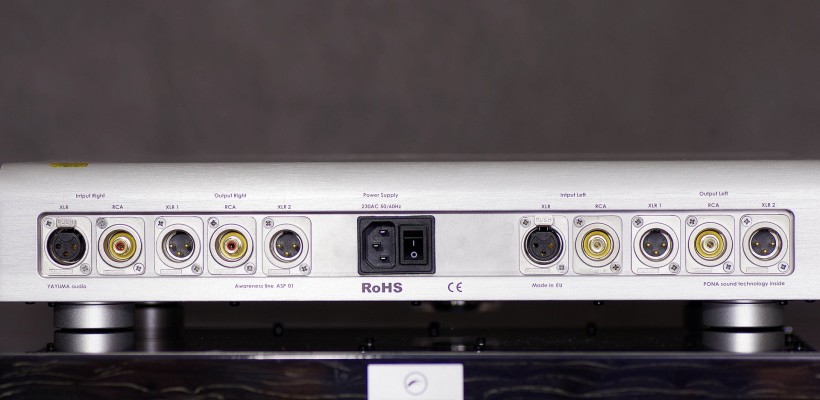
From the presentation I learned that ASP 01 uses some mathematical algorithms to minimize a specific “discrepancy” between the processes of music recording and reproduction. This particular “discrepancy” has been widely accepted by everyone in the industry so we’ve all suffered its consequences for many, many years. In addition, I also learned that this device is called a sound processor, which is a term commonly associated with equalizers that introduce changes in the frequency range, tone, phase, etc., only for lack of another better term and not because the role of ASP 01 is the same. According to its designers this Polish analog (!) processor does not introduce any such changes in the signal. So despite this inherent skepticism, I had to give Yayuma a chance.
What actually is this discrepancy that negatively affects the sound, thus not allowing us to hear everything that was recorded in the way it was recorded? As Mr Jerzy Pona, one of the three people behind Yayuma, said during one of the interviews, while looking for a way to improve the sound initially, like many companies around the world, they focused their efforts on finding a way to linearize the movement of driver’s diaphragm, an element that converts electrical signal to sound waves. The work lasted for several years, but did not lead to satisfactory results. Yet, it allowed them to develop precise mathematical models of drivers, which in turn allowed them to transfer a large part of the work to a computer. Today computer software is a popular tool used by many designers/manufacturers to develop new transducers or even entire loudspeakers. Computer simulations simplify the process of developing new products, although final assessment is (or at least should be) always conducted during listening tests.
Developing their proprietary mathematical models has given Yayuma a new tool for their work. Some experiments were still done with physical transducers, but many of them could now be performed using computer simulation as the mathematical models allowed them to precisely calculate drivers’ behavior. At some point Mr Jerzy realized that the process of converting an electrical signal delivered by an amplifier to a loudspeaker was not an exact reversal of the conversion of the vibration of the microphone’s diaphragm to an electrical signal. Since it is not an exact reversal, it means that what we can hear from our speakers is not an exact reproduction of the sound recorded by the microphone. I can not really offer your an in-depth mathematical/technical analysis of the solution proposed by Yayuma, so I decided to use a simple version proposed by the Mr Pona. Yet, since the solution has been patented, if you’re interested, you can find a more comprehensive information in the patent’s description.
To hear from speakers exactly what a microphone “heard” (recorded) in the studio the conversion process would have to be the exact opposite, and as we have already established, it’s not. What is registered when recording music is actually a velocity of the microphone’s diaphragm. When music is replayed the driver(s) in our loudspeakers (or headphones) try to recreate the diaphragm’s position based on data on microphone diaphragm’s movement velocity. This fact is not a great discovery, and what sound engineers do in studios while recording music includes, among others, such a correction of the recorded material, the above mentioned discrepancy is as small as possible. The point is that they do not have good enough tools to do that. As Mr Jerzy said, he was surprised that nobody ever did something about it, that the industry accepted this fact as if nothing could be done about it and therefore what all of us can hear from our loudspeakers is an incomplete set of musical information. And so he decided to find a way to change that. The Yayuma’s PONA Sound algorithm used in ASP 01 is designed to make the driver’s diaphragm movement a reversal of the microphone’s diaphragm movement so that one can hear a fuller and more accurate reproduction of the recorded material. The tested processor is not a magic box though, that will make every recording sound excellent. It works with the signal it receives. Hence, with material that was heavily processed in the recording studio, the ASP 01 will not be able to do much as the original signal was changed significantly. It should do a much better job with recordings with less producer’s intervention, because the signal in such recording is much closer to what a microphone “heard” in a studio. At least that’s the theory, but for me what really matters is what one can actually hear while listening to the music with ASP 01 in the system. This time I had a chance to check Yayuma’s influence on the sound in my own system. So is it really worth that much money to add it to some high class, refined? Why refined? In my opinion, same as with cables, anti-vibration and power accessories, also such sound processor should be tried/used in a well-known, high-class system that already sounds great and might need only some “final touch” to present its full potential. I believe that it belongs to the category of components, which are not really intended to directly improve sound quality of the system but rather to reduce its limits, or to release its full potential. Only in this case it is about the potential of the recordings played using this system, not the system itself.
The Yayuma’s PONA Sound algorithm used in ASP 01 is designed to make the driver’s diaphragm movement a reversal of the microphone’s diaphragm movement so that one can hear a fuller and more accurate reproduction of the recorded material. The tested processor is not a magic box though, that will make every recording sound excellent. It works with the signal it receives. Hence, with material that was heavily processed in the recording studio, the ASP 01 will not be able to do much as the original signal was changed significantly. It should do a much better job with recordings with less producer’s intervention, because the signal in such recording is much closer to what a microphone “heard” in a studio. At least that’s the theory, but for me what really matters is what one can actually hear while listening to the music with ASP 01 in the system. This time I had a chance to check Yayuma’s influence on the sound in my own system. So is it really worth that much money to add it to some high class, refined? Why refined? In my opinion, same as with cables, anti-vibration and power accessories, also such sound processor should be tried/used in a well-known, high-class system that already sounds great and might need only some “final touch” to present its full potential. I believe that it belongs to the category of components, which are not really intended to directly improve sound quality of the system but rather to reduce its limits, or to release its full potential. Only in this case it is about the potential of the recordings played using this system, not the system itself.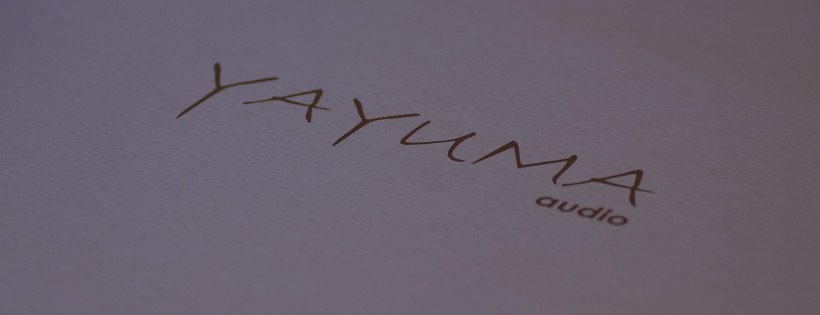
Design
The ASP 01 (Analogue Sound Processor) features what one could call, a classic appearance. A well-made and finished aluminum chassis of standard size, curved top edges of the front and rear panels – all this creates a really pleasing visual effect. A relatively small LED display was placed on the right side of the front, next to a colored bargraph showing an input signal level, and two dip switches sitting in a small “recess” together with two associated diodes. These switches are used to operate the device’s menu, but in real life most users in home systems will probably use the original remote control. This is a large metal rectangular box that aesthetically refers to the device it controls and hence its sides look like radiators and the top edge of the front is rounded. The radiators suggest that this remote must work in class A… it’s a joke, of course, but the design is quite original. I mentioned that it will rather be used by home users, as there is also a version for professional users in works. It will be used in studios, mounted in a rack and it is quite possible that it won’t even feature a remote at all. During the first meeting I asked the Yayuma guys whether this device should rather be used in recording studios, because if it had been used there, maybe we would not need it in home systems. And actually it most likely will happen, because numerous presentations for professionals already convinced some of them of the value of ASP 01. The only “problem” is that they will be able to use it for their new productions, while for all the music recorded before that those who want to utilize Yayuma’s algorithm must purchase a processor for their home systems.
The ASP 01 is a fully balanced analog device. Only controlling functions are performed in the digital domain with 11 microprocessors connected by SPI, but according to manufacturer the analog signal that is delivered to device’s inputs is never converted to a digital form. The device features both balanced and unbalanced inputs, although signal from unbalanced input is first symmetrized and only then processed using Yayuma’s proprietary algorithm There are also three analog outputs on the rear panel, 2 x XLR and 1 x RCA, a power supply inlet and the main switch. I did not open the device as it was sealed – there was a plan to do that when Yayuma crew showed up to pick up the processor after the test, but this time all three gentlemen showed which gave me a chance to talk to Mr Jerzy plus to listen to a prototype of a headphone amp (I’ll get back to that later). So after all we didn’t open the processor’s chassis to peak inside and I can only tell you what manufacturer’s materials say – for their product Yayuma used audiophile quality components.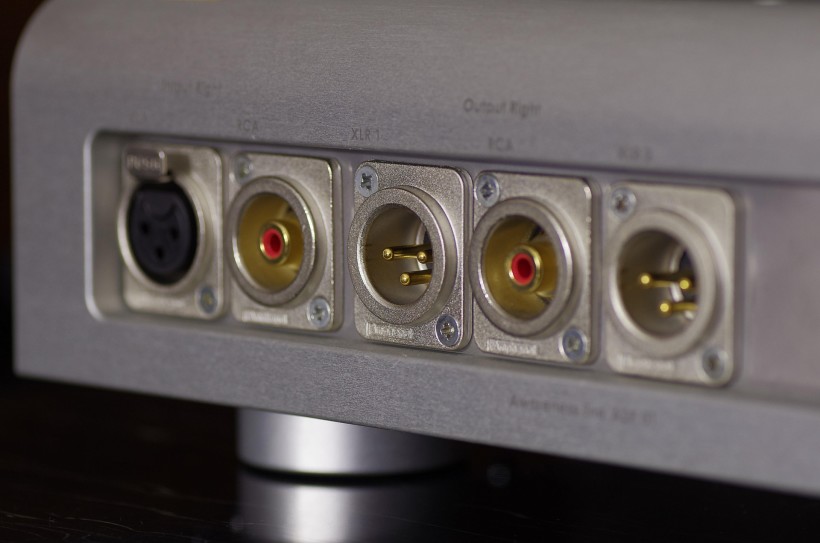
The device should be plugged into the system between a source and preamplifier/integrated amp. Another option is to connect it between preamplifier and the power amplifier. I used the first option as it is the recommended one. After connecting the source to the processor, one should set proper input signal level – that’s what the color bargraph is for. One should set the level so that the green, yellow and the first red LEDs are on when device receives signal from the source. According to Yayuma that’s when the processor works optimally. In the menu one chooses between RCA and XLR inputs, enables/disables the algorithm and chooses the depth of this algorithm operation (which allows user to smoothly adjust processor’s operation to various types of recordings). One can also adjust the input signal level (see above) and, with the built-in attenuator, also the output level (although the processor is not to be used as preamplifier to adjust volume in the system). Additional options include a sibilance filter and the DC component remover. All these functions can be operated also using a remote control, so while sitting in the chair during the listening session, one can enable/disable the algorithm to compare the sound with and without it, or to choose the depth of its operation. This makes comparisons relatively simple. Evaluating whether one likes or dislikes processor’s effect on the sound and why is not that simple as one might think.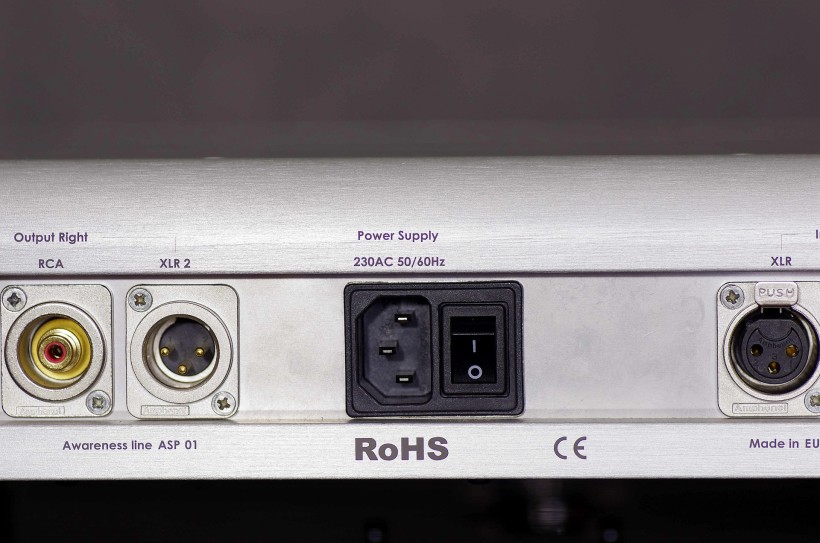
Sound
During the Audio Video Show in Warsaw I left Yayuma’s room after a short listening session with a conclusion that their processor changes sound. There was no doubt about that. I was even inclined to believe that the change was a positive one, although I voiced my doubts about the fact that each time after the algorithm developed by Mr Jerzy was turned on, the sound seemed first of all louder. The natural thing is to perceive a louder (within reason, obviously) sound as better – everything seems clearer, it feels like there is more detail in the sound, that it is more dynamic, etc. It is in fact a simple way to cheat one’s ears, or rather one’s brain processing signals coming from ears. Thus, I was not so sure about this positive impression, but I had no doubt that ASP 01 changed the sound in some way. When we met after my test I raised the same question again and Mr Jerzy confirmed that they had measured this “significant difference” and it turned that it was only by 0.2-0.3 dB. So in fact, the difference is negligible, which means it had to be about something else that made me and others who visited Yayuma’s room, perceive sound as louder. Anyway, after the Show I concluded that to establish whether the influence of the ASP 01 was a good thing I’d need it for at least a few days to test it in my system. As it turned out later, I was to get my chance and you’re reading now my attempt to describe what I’ve heard and what my conclusions are.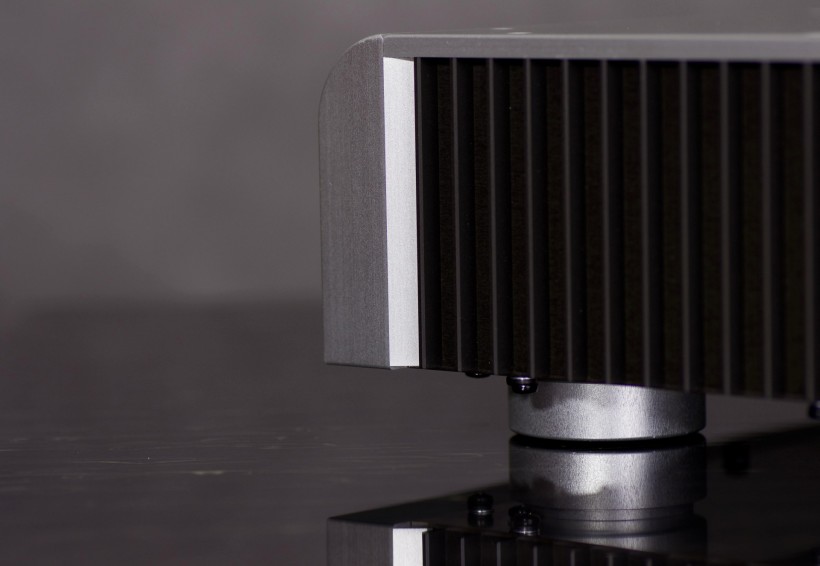 As already mentioned I followed Yayuma’s instructions to the letter and plugged the processor between sources and the preamplifier or integrated amplifier. I used my system with a digital front end with a dedicated audio PC and LampizatOr BIG7 DAC and an analogue front end with the J.Sikora Basic turntable, Schroeder CB tonearm, AirTight PC3 cartridge and with GrandiNote Celio mkIV phonostage used interchangeably with the absolutely top-notch Tenor Audio Phono 1. The processor was connected to either my Modwright preamplifier and power amp (LS100 + KWA100SE), or for some time also directly to NuVista-600 integrated. Both amplifiers drove my trusted Ubiq Audio Model One Duelund Edition speakers via either my LessLoss Anchorwave speaker cables or the top shelf replacement – the Skogrand Beethoven. The units were connected using Hijiri Milion and LessLoss Anchorwave (RCA) and Yayuma’s own XLR interconnects.
As already mentioned I followed Yayuma’s instructions to the letter and plugged the processor between sources and the preamplifier or integrated amplifier. I used my system with a digital front end with a dedicated audio PC and LampizatOr BIG7 DAC and an analogue front end with the J.Sikora Basic turntable, Schroeder CB tonearm, AirTight PC3 cartridge and with GrandiNote Celio mkIV phonostage used interchangeably with the absolutely top-notch Tenor Audio Phono 1. The processor was connected to either my Modwright preamplifier and power amp (LS100 + KWA100SE), or for some time also directly to NuVista-600 integrated. Both amplifiers drove my trusted Ubiq Audio Model One Duelund Edition speakers via either my LessLoss Anchorwave speaker cables or the top shelf replacement – the Skogrand Beethoven. The units were connected using Hijiri Milion and LessLoss Anchorwave (RCA) and Yayuma’s own XLR interconnects.
The processor was delivered for test personally by Jarek Proksa and Marcin Skrzypczak. Unfortunately Mr Jerzy got sick and couldn’t come this time. The gentlemen gave me a brief instruction on APS 01’s operation, we connected processor to the system that I was using at this moment (with turntable and Audia Flight phonostage – see Polish review HERE, and with NuVista-600 integrated) and we listened to some music together. At first, I had to learn how to use the original remote control to turn on and off the processor (the algorithm to be exact, because the processor was turned on all the time), changing depth of its operation, and also switching on and off a sibilance filter. We listened to one, sometimes two tracks from numerous albums from different periods and genres.
We started with some albums, which were supposed to gain not so much with the ASP 01, I mean rock albums by Genesis and Dire Straits. In both cases, as usually with this type of music, the sound was heavily processed in studio. I played and old, Japanese release of the “Abacab” and the latest 2-disc MoFi release of the “Brothers in Arms”. The influence of sound quality on either of these discs was not significant, but it was noticeable. Especially on the Genesis album it seemed that sound got bit richer and more open in the top. Richness of the midrange and even a bit less harsh or simply smoother treble is always welcomed in rock music and also this time ASP 01 allowed me to enjoy this album a bit more than usually. On Dire Straits the difference was smaller, though, also here I had an impression of a slightly better definition and differentiation of a bass guitar and a kick drum so even though the improvement was not significant it again allowed me to enjoy this album bit more.
With positive results on both of those albums with ASP 01 I reached for U2’s “Rattle and hum”. As I have written many times before I am a fan of this Irish band, but a poor quality of their recordings is a reason why I listen to them in my car rather than at home. It is also the case with the above mentioned album, and even such a superbly sounding setup supported by the Polish processor was unable to change that. It sounded still flat, “screamy” and far from natural. This clearly proved that Yayuma is able to extract information and quality only from these recordings in which those elements occur. With poor quality ones, such as the “Rattle and hum”, it’s not able to improve anything as the information is not there. With those of a decent, although still not audiophile, quality, user can count on a slightly richer, smoother, more enjoyable performance while using ASP 01.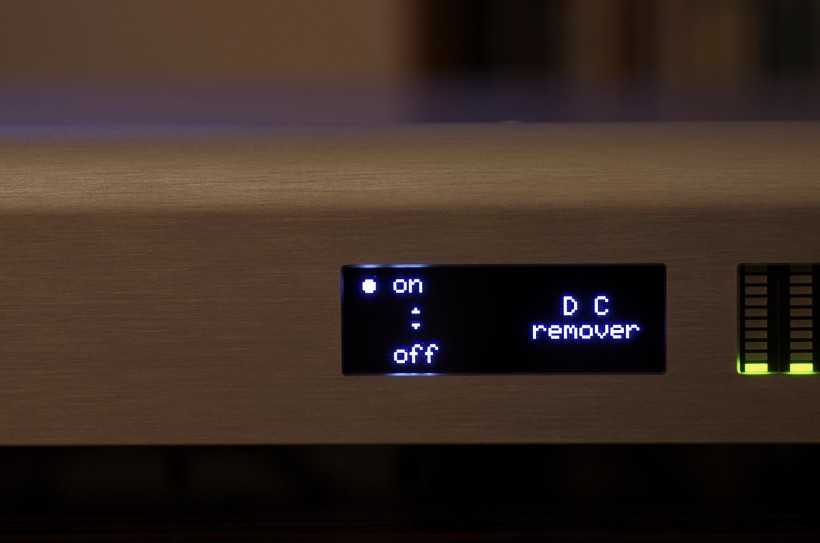
After the U2 experience, I decided to focus mostly on my favorite records of at least decent sound quality, that, even without the tested processor, offered very good, or even fantastic performance. I found out quickly enough that, with the ASP 01 in the system, the realism of the presentation reached a new, even higher level. I mean a level when one forgets about any analysis of performance, any assessment, being completely immersed in the music. This was even the case with completely analogue album of Michel Godard (prepared by Sommelier du Son label). Dirk Sommer uses the simplest methods for both recording and subsequent material processing. The final effects of this minimalist, completely analogue approach are absolutely stunning on each of his productions even without the ASP 01. Michel Godard’s album is a must for any fan of high quality recordings and the music is also very special. In this recording Dirk phenomenally captured on the tape the acoustics of the abbey’s courtyard, where the recording was made, as well as sound of instruments and voices. The sound is … simply mesmerizing, true, it captures listener’s attention from the very first moment, engages him emotionally and keeping in an excited state until the last note decays into the silence. And that’s how it sounds without Yayuma on a good system. To be honest I didn’t think it could sound any better. I was wrong. With the PONA Sound algorithm on it did sound even more natural, accurate, more realistic. It was not so much about the even larger number of information present in the sound, although in fact with Yayuma I felt as though I could hear even more of these tiny elements that contribute to the authenticity of the sound.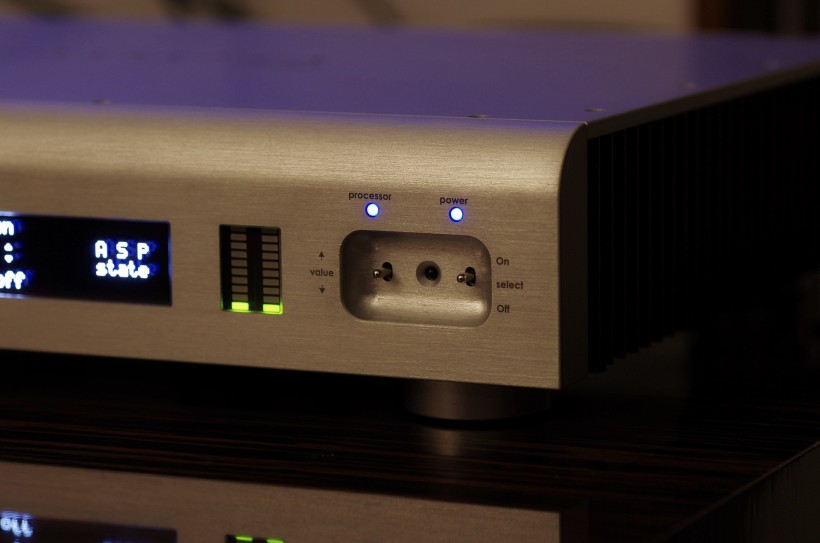
The key difference introduced by the Yayuma was actually something that I would describe as a higher level of energy in the sound. This is one of the key elements that allow one to distinct easily a live music from one played by any audio system. The best setups come close to the level of energy (energy is not the same as dynamics) that is delivered with live music but none of those I’ve had a chance to listen to so far reduced this difference as much as mine, after all, not so expensive system, combined with the ASP 01. Since most people are visualizers, let me use an analogy from my personal experience. Several years ago I attended one of the first official presentations of OLED TVs in Europe. Compared to the LCD, the OLED’s colors were brighter, more saturated, the black was blacker, white whiter, the motion was smoother, and all that translated into a more realistic, more natural, eye-pleasing, non-fatiguing image. The Yayuma ASP 01 introduced similar effect to the performance of the system on this album. Its sound without a processor is phenomenal and it seems that nothing more could be squeezed from the vinyl. However, adding Yayuma to the system proved that there was still a hidden reserve of information on this disc, which was lost somewhere without the Polish processor.
I focused on this particular album because it’s one of my favorites and because I didn’t expect it could get any better with Yayuma. But I achieved similar effects with numerous albums recorded and released a few dozen years ago. I enjoyed incredible performances of Oscar Peterson, Ray Brown, Miles Davis, Muddy Waters, Ella Fitzgerald with Louis Armstrong, Etta James, Nina Simone, and even very old Toscanini’s recordings. Each of these albums with ASP 01 sounded more vivid, more true, more realistic due to more information in the sound, more intense colors and emotions accompanying music. Instruments and vocalists were more present, more palpable. Interestingly, more information in the sound, as it turned out, was not always the most desirable feature. I could here more of performers’ breathing, small creaks, taps, sighs, and so on. On one hand it added even more authenticity to the performances, allowed me to get transported straight to the concert halls, clubs, studios, to feel the presence of the performers. On the other, there were (few) recordings (Mr Jerzy Pona presented some of them to me), where I could hear those non-musical elements such as, for example, hard work of sweating and groaning bassists or cellists, that it all seemed “too real” for me to fully enjoy the music. However, this only concerned a few recordings. In most cases, I drowned myself in music completely and unconditionally as I usually do during… live concerts.
The performance of my system with APS 01 was so engaging and addictive that, interestingly, I made some choices almost subconsciously. One was the depth of the algorithm. When I started to play the older, well-recorded, well-pressed discs I chose the recommended value “14” and simply stopped playing with it. The second choice was volume level. Usually when the system delivers exceptionally good performance I tend to increase the volume to enjoy it even more (and share the fun with my neighbors  ). In this case though, after a while, I realized that, firstly, the volume was set slightly lower than usually, and yet I could hear even the tiniest details. Secondly, several hours of listening caused zero fatigue and when one album finished I immediately searched for another one to play. This is one of my personal definitions of natural sound – no matter how much time I spent listening to a natural sound I’m never tired and always hungry for more.
). In this case though, after a while, I realized that, firstly, the volume was set slightly lower than usually, and yet I could hear even the tiniest details. Secondly, several hours of listening caused zero fatigue and when one album finished I immediately searched for another one to play. This is one of my personal definitions of natural sound – no matter how much time I spent listening to a natural sound I’m never tired and always hungry for more.
One of the interesting effects of using the PONA Sound algorithm during the song with Ella Fitzgerald was pushing the accompanying band at least a step further away from her. The singer herself remained exactly where she was with the algorithm off, she was also not pushed forward towards me, but the gap between her and the instruments clearly increased. I returned to Dire Straits’ album I listened at the beginning of this test, and although this time it was not so obvious, knowing what I was looking for I also noticed that the rest of the band seemed placed bit further away behind Knopfler than without ASP 01. The presentation still seemed natural, it was not a “spotlight” exposing just the leader while hiding the rest of the band in the darkness, but merely a subtle emphasis of his role. All spatial relations, acoustic environment, reverb, and so on, were preserved, and the high quality recordings were presented in an insanely realistic, precise and coherent manner. What’s important is that this effect was not the same with every recording, which clearly proved that it was not the reviewed device that imposed its sonic character over various records, but it rather only “enhanced” the intrinsic features of each track depending on its qualities.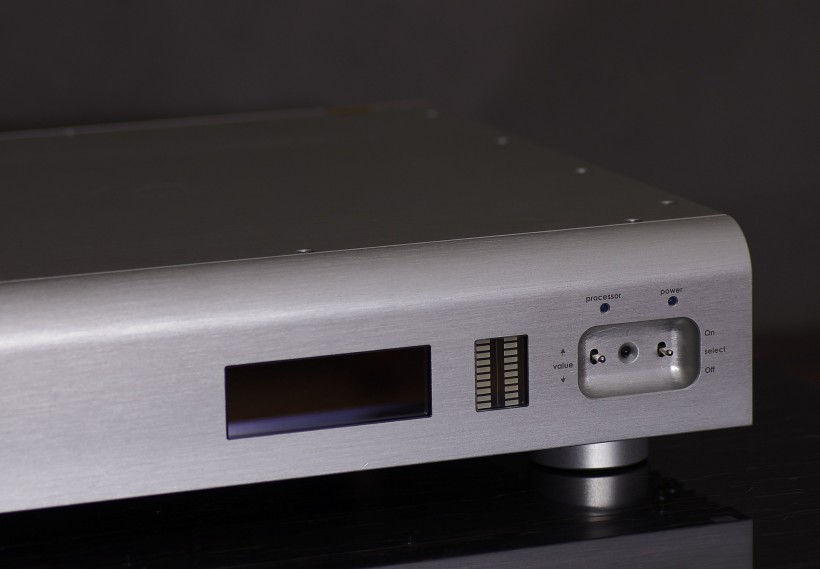
The longer I listened to the system with Yayuma, the more I became convinced that it affected the upper midrange and treble most. I think that the biggest “gain” was the already mentioned higher level of energy in the sound. It was particularly obvious with vocals, cymbals, brass instruments and even with acoustic guitars. They all sounded more powerful, their sound was more vibrant, more open. Interestingly, it didn’t change the overall tonal balance. More energy in the upper part of the band was not delivered at the expense of the lower part. These elements were not emphasized, though they seemed to play a more significant role. I was less impressed with how Yayuma effected the lower part of the band, but it could be a result of the whole system’s performance, because with Tenor phonostage and NuVista integrated my speakers delivered fantastic, fast, tight, tuneful bass already without ASP 01. Of course, the ASP 01 affected this part of the band too, but it was not as obvious as in the case of the higher frequencies. There was a noticeably better differentiation in terms of both, tone and dynamics, also even better timing with the processor. These differences seemed minor, at least until I was forced into the “rehab” from the ASP 01 when it returned to manufacturer. Only then I realized how significant improvement Yayuma was introducing to my system.
I promised you a few words about the prototype of the Yayuma headphone amplifier, which I had the opportunity to briefly listen to using my trusted Audeze LCD3. As, based on how different is ASP 01 from other sound processors, one might have guessed also the headphone amp will be quite unique. Mr Jerzy mentioned, among other special features, one particularly interesting – they plan to measure user’s hearing and adjust the amp accordingly to the result for this individual. As you all know there are no two people with identical hearing. This type of “customization” should give this device an advantage over competitors. Even though we did not customize the prototype to my ears I liked the performance so much that I already asked for a review sample as soon as production units will be available. Of course, we used the ASP 01 in the system too, so the abundance of information in the sound was impressive. Let me emphasize once again that it is not about flooding listener with so much detail that he stops listening to the music as all these details distract him. Instead all the information is used to create a remarkably complete, coherent, convincing musical image. And that’s what this headphone amplifier, partly due to the support of ASP 01, presented. I know that many people consider Audeze to be a dark-sounding headphones, but Yayuma’s amplifier proved once again that it is not the case, as long as these cans are paired with a proper system. The listening session was very short so drawing credible conclusions was not really possible, but it was very, very promising. I am definitely looking forward to the premiere and the opportunity to spend at least a few days with it.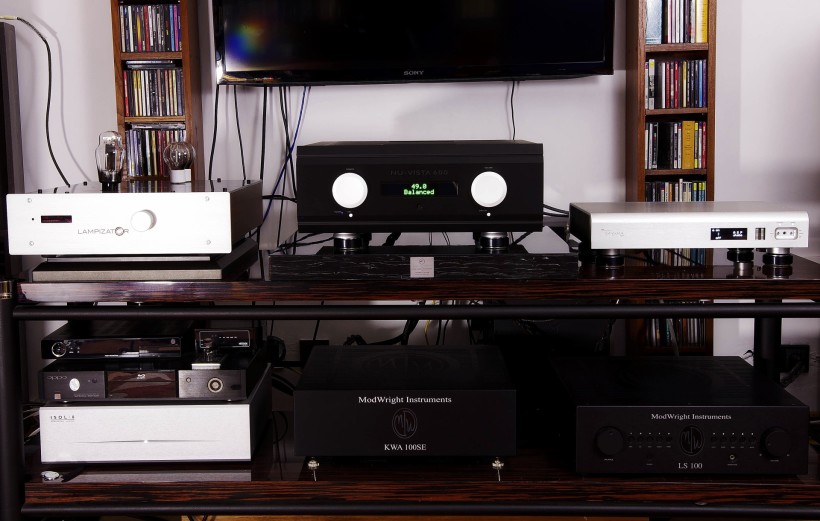
Summary
All the subsequent listening sessions confirmed my initial observations and also what the manufacturer clearly states. The performance of the ASP 01 processor is directly dependent on the quality of the recording and on how it was made (processed in studio). Definitely Yayuma worked best (making sound most realistic and authentic) with the older – jazz, blues, classics – albums that were recorded and processed still in analogue domain, with as little “interference” to the original material as possible. Quality contemporary projects also benefited from Yayuma’s algorithm with more energy and information in the sound. To put it simply – with the ASP 01 the music sounded more natural, more real, more engaging. On the other hand Yayuma is not an answer to poor quality of recordings. If at the production stage material is heavily processed, hence significantly modified compared with what a microphone “heard” during recording, this Polish processor will not be able to do anything about it. If you are a fan of these music genres that are not associated with high quality sound, that use a lot of compression and so on, then most likely you won’t find ASP 01 particularly helpful or worth its price. However, if you are into jazz, vocals or classic music, particularly if you listen to a lot of recordings made in “analogue times”, adding Yayuma to your system might be a great, although risky move. Appreciating what this device does to the sound is not simple and takes some time (hence listening to ASP 01 for, say, half an hour does not make much sense), but once you embrace this remarkable, authentic sound parting with it might be extremely painful. I know something about it, because I write these words 2 weeks after the processor left my system. Without it, listening to music even on my beloved system got less interesting, less exciting, there is still something missing in its performance and experiencing music is simply incomplete.
The question that many of you might be asking right now is whether it is worth spending so much money on Yayuma ASP 01? Mr Jerzy during our meeting proved to be an optimist saying that he believes that Yayuma processors must become part of every good audio system sooner or later, because there is no other way to get sound as authentic, as close to what the microphone “heard” in studio as with ASP 01. It is a unique product, a true innovation which doesn’t happen so often in audio industry. It took years and a lot of money to develop it and that’s why it has to cost a lot. After assessing it in my system I am inclined to agree with him – Yayuma ASP 01 should be a part of as many audio systems as possible. Of course, because of its price, the number of systems it actually shall become a part of will be limited which is a case with any high-end product. There is a good news too – a more affordable version is in the company’s pipeline which should make it affordable for more audiophiles. Those who can afford it and want to squeeze every last drop of sound quality from their high-end systems and the best albums from their collections definitely should give this Polish processor a try. Assess it in your own system with recordings you know well then make your own decision whether it is worth of your money. As for me, if I could afford Yayuma ASP 01 I would have simply kept it after the test. I guess that the best recommendation I can offer you.
Associated equipment:
- Analogue front end: J.Sikora Basic turntable, Schroeder CB tonearm, AirTight PC-3 cartridge, phonostages: Tenor Phono 1, Grandinote Celio mk IV
- Digital sources: a dedicated, passive PC with WIN10, Roon, Fidelizer Pro 7.3, JPlay Femto USB card with Bakoon battery power supply, JCat USB Isolator, Hdplex linear power supply
- D/A Converter: LampizatOr BIG7
- Power amplifiers: Musical Fidelity NuVista-600 integrated, Modwright KWA100SE power amp
- Preamplifier: Modwright LS100
- Loudspeakers: Ubiq Audio Model ONE Duelund Edition
- Interconnects: Hijiri Million (RCA), Less Loss Anchorwave (RCA), Yayuma (XLR), TelluriumQ Silver Diamond USB
- Speaker cables: Skogrand Beethoven, LessLoss Anchorwave
- Power cables: LessLoss DFPC Signature, Gigawatt LC-3
- Power: Gigawatt PF-2 MK2 and ISOL-8 Substation Integra; a dedicated power line with Gigawatt LC-Y in-wall cable; Gigawatt G-044 Schuko and Furutech FT-SWS-D (R)
- Racks: Base VI, Rogoz Audio 3RP3/BBS
- Antyvibration accessories: ROGOZ-AUDIO SMO40 and CPPB16 platforms and ROGOZ AUDIO BW40MKII feet, Franc Accessories Ceramic Disc Slim Feet and Wood Block Platform
Retail price:
- Yayuma Awareness Line ASP 01: 25.o00 EUR
Manufacturer: YAYUMA


